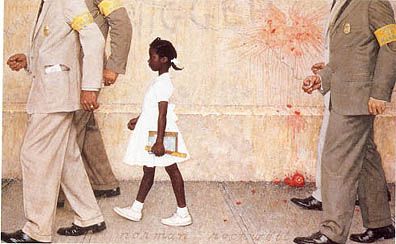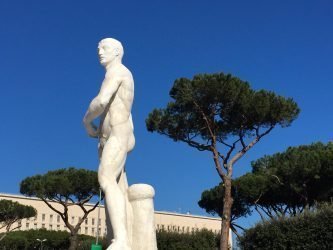Every artist is opinionated. Without emotion derived from free thinking, the most revolutionary and groundbreaking art would never have come to be. The opinions of artists are also commonly political, as reflected in their art. Because of this, there is a point to be made that nearly all art has political undertones of some kind.
Contrary to what many believe, not all politically motivated art is illegal graffiti like it is in the case of Banksy and Fairey, who created their famous street art as a form of protest. In fact, some of the most famous artists to ever live depicted political landscapes or themes within their work. Norman Rockwell is famous in part for his depiction of Ruby Bridges going to school while being heckled by protesters, and even Picasso protested war during his time.

Art has a deep history in politics, and politics has an equally deep history in art. The two have been known to influence each other for as long as they have both existed. One of the most obvious reasons why are and politics are irrevocably connected is because they have the same audience. Art is, in many ways, an appeal to the public, which is the same group that politicians are trying to represent.
Art is also a means for individuals to stay connected to the world, where politics is unavoidable. Art provides information and accounts, like how courtroom sketches are sometimes the only documentation of the emotions portrayed in legal proceedings.
However, the correlation between art and politics is not always a good one. One of the first actions of Mussolini after taking over Italy was commissioning art to glorify his regime. This weaponization of the arts supported his tyrannical dictatorship and helped him cling to power.

Now, there is certainly art out there that has nothing to prove, or has something to prove entirely unrelated to politics. It is hard to claim that a painting of just a house is a political statement when the artist has not claimed as such. But that does not make it immune to political interpretation based on the specifics. These rare cases of political apathy do not negate the point that there would be no art without politics.
Regardless of how it appears to us, art has had an undeniable impact on politics, and politics has had an even greater impact on art. In the 21st century, the two are so intertwined with each other that it is often hard to differentiate between them. In our inherently political world, art is not immune from the lens of a society that sees everyone as either an opponent or an ally, and every artistic production as a statement.
Thanks for reading and come back soon for the next installment of my art blog, where I talk about all things art, such as art history, impact and review.





